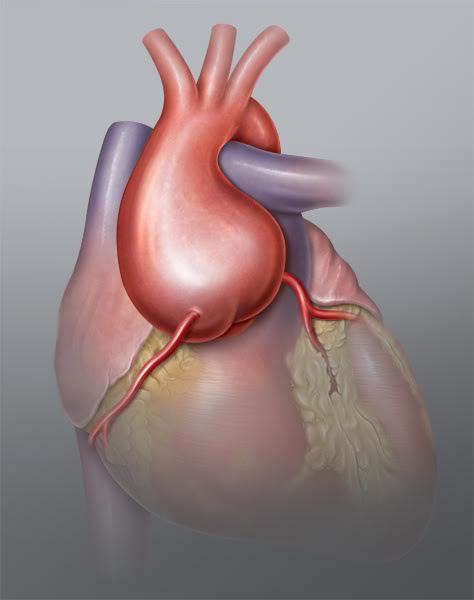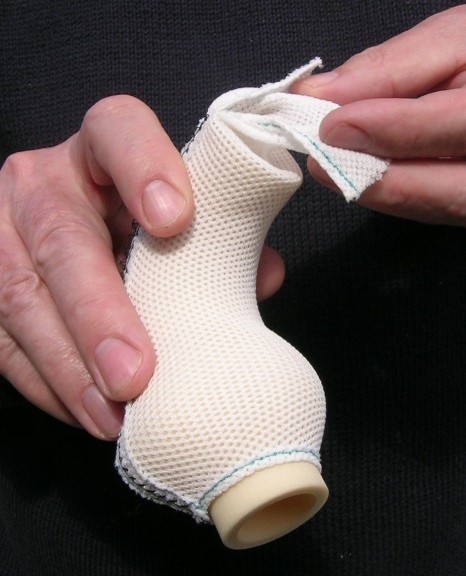3D Printing For Your Aortic Root Aneurysm
[Permission to use images and data have been granted by Tal Golesworthy C Eng MEI MRSC]
I have recently been receiving a significant number of inquiries from patients across the country wanting to learn more about the PEARS surgical procedure for aortic root aneurysms.

The aortic root is a complex anatomical region. It is the portion of the aorta that connects the aortic valve to the ascending aorta.
There is a lot going on in the aortic root - it is a very busy place. Many vital functions of the cardiovascular system depend on the aortic root. The leaflets of the aortic valve extend into the root when in the open position. If the aortic root is damaged - such as in a Type A aortic dissection - the function of the aortic valve could be affected even though the valve leaflets themselves are normal.
The left and right coronary arteries originate from the root to provide oxygenated blood to both the left and right side of the heart.
It is a paradox that the heart is full of blood, however the blood inside the heart does not nourish the heart muscle. The oxygenated blood needs to be pumped out of the left ventricle (through the aortic valve) and into the aortic root so that the blood can travel “backwards” through the left and right coronary arteries on the surface of the heart. The coronary arteries transport blood to all areas of the left and right ventricle which allows the heart muscle to receive important nutrients which sustain the viability of the myocardial muscle.
When the aortic root enlarges (aneurysm), the integrity of the aortic wall weakens. Essentially, the wider the aortic root expands side-to-side, the thinner and weaker the aortic wall becomes as it is stretched. The thinner and weaker the aortic wall becomes, the more likely it is to tear, rip or burst.
In order to prevent the catastrophic consequences of rupture of an aortic root aneurysm, most surgeons prefer to cut out the aortic root and aortic valve and replace the ascending aorta and aortic root with a woven polyester surgical graft and the aortic valve with a prosthetic valve. This is called the Bentall Procedure.
The Bentall Procedure is a very successful procedure and removes all of the compromised aortic tissue.
However, the extent of the operation is a lot for patients to go through.
The PEARS procedure - Personalized External Aortic Root Support - approaches aneurysms of the aortic root from a different perspective.
Instead of cutting out the diseased aortic root tissue, the PEARS procedure involves wrapping the aortic root with a 3D printed exoskelton of fabric to prevent the aneurysmal tissue from expanding further and provides a mechanism for the weakened tissue to regain its integrity.

Not all medical centers and not all countries have access to the technology for the PEARS procedure.
Here are the current data regarding the PEARS procedure:
Clinical Centers:
UK 8
Ireland 2
Belgium 1
Holland 1
Czech Rep. 4
N Zealand 1
New centers in preparation in Poland, France and Australia.
Outcome Data
129 patients have been treated with a PEARS ExoVasc.
Collectively 441 post-operative patient years.
The youngest treated patient was 11 years old and the oldest patient was 75 years old.
Patient number 1 at 13 years and 8 months post op.
12 patients with more than 10 years follow up.
33 patients with more than 5 years follow-up.
3 female patients have had 4 completely uneventful pregnancies and deliveries post PEARS surgery.
Operation time typically around 2 hours.
No adverse device related events.
90 of the 129 patients treated with PEARS Exovasc have Marfans Syndrome.
5 patients had a Mitral repair at the same time as PEARS.
5 patients also having dilation-induced aortic regurgitation reduced/eradicated by use of reduced-diameter PEARS ExoVasc implant.
Many PEARS operations carried out without Cardio Pulmonary Bypass (CPB).
Others required only a short time on CPB but with a beating heart at normal body temperature.
What This Means
The PEARS procedure is gaining interest among both heart surgeons and patients with aortic root aneurysms as an alternative approach to treating aortic root aneurysms.
There are currently over 40 medical publications in the scientific literature describing the surgical technique and documenting patient outcomes.
At present, the procedure is not available in the United States.
Patients in the United States who are interested in learning more about the procedure can contact me at info@badaorta.com.
We are working with the surgeons in the UK who have the most experience with this procedure to help streamline the evaluation process for patients in the US.
Patients can travel to Nashville to be evaluated by a multi-specialty team. The information here in Nashville will be sent to the team in London and a decision on whether the patient is a candidate for the PEARS procedure will be made.
If a patient in the US is a candidate for the PEARS procedure, they can then travel to London to receive treatment.
Since not all patients are a candidate for the PEARS procedure, meeting with physicians in Nashville can potentially eliminate an unnecessary trip to London for evaluation.
Summary
In future posts, I will discuss more details about the PEARS procedure and how the PEARS procedure might be available in the United States at some point.
For additional resources about the PEARS procedure, or to learn more about the process of being evaluated for an aortic root aneurysm, please check out these resources:
Was this post informative?
Subscribe to my newsletter to learn more about the aorta, its diseases, and how to treat them.
Comments
Share your thoughts below — I try to get back to as many comments as possible.